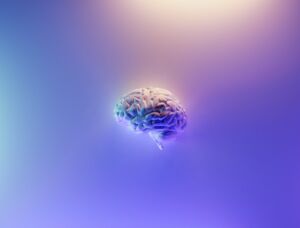It ain’t always easy to navigate the Digital Age when your brain developed in the Stone Age. We’re hard-wired to respond to threats—many of which no longer exist. With that in mind, we might be tempted to simplify this post’s title down to “What doesn’t create anxiety in the brain?”
Stressors surround us, but our brain only experiences the stress. So, it can react to a job interview in the same way it would’ve reacted to a predator thousands of years ago. If this reality remains unchecked, it can result in an anxiety disorder. Therefore, it can be very useful to better understand the process.
 What Happens in Your Brain When Anxiety Arrives?
What Happens in Your Brain When Anxiety Arrives?
Regardless of what causes the anxiety, your brain is designed to respond quickly and sometimes intensely. This is usually called the fight-or-flight reaction, and it causes your heart, for example, to beat faster so:
- Your muscles have extra energy to escape or fight.
- You breathe in more oxygen than usual to support your survival behaviors.
Fight-or-flight also reduces your brain’s attention to intellectual needs. As a warning system of sorts, your emotions get prioritized. This causes you to focus more deeply on the threat. If you wonder why you respond so strongly to something like a first date or giving a public talk, it’s because your brain lumps all of it (including imagined risks) under the category of “potentially life-threatening stress.”
But How Is Anxiety Created in the Brain?
Let’s break it down more technically now. It is believed that an almond-sized part of your brain called the amygdala handles incoming signals and how they are interpreted. If the amygdala identifies what it believes is a threat, it warns the rest of the brain. That’s how the above response is triggered.
If the anxiety response keeps getting triggered, another part of the brain can play a big role in sustaining anxiety. The hippocampus stores risks and dangers as memories. The positive goal of this is to help the person avoid them in the future. The negative side is that repeated anxiety reactions—to real or imagined threats—can cause the hippocampus to be overworked. It can even get smaller as a result.
So now, the anxiety is stored in fragments and never resolved. An increasing number of events or people can be viewed as “dangerous” by your brain. An anxious cycle kicks off and can lead to long-term disorders.
Long Story Short
- Thanks to the biological design of your brain, it can’t differentiate between real and perceived dangers.
- It is hard-wired to react to possible threats in an extreme manner that can further confuse what is and isn’t a risk to your well-being.
- Chronic triggering of the fight-or-flight response can cause the amygdala and the hippocampus to malfunction, thus creating a cycle in which you get “stuck” in a hyper-vigilant mode.
- At this point, anxiety becomes your default setting, and you are probably dealing with an anxiety disorder.
Anxiety disorders are the most common mental health condition on the planet. They are not the result of you making a mistake or being uniquely flawed. Our brains are doing their best in an environment that is often confusing when we consider when we originally evolved.
Seeking Help
If you experience free-floating anxiety, it can be frightening and disheartening. You realize that you have anxious thoughts but can’t pinpoint a cause. As you can see from the above explanations, this is not as unusual as it feels. Fortunately, it can be addressed and managed. There’s no reason for anxiety to rule your life. Your path to recovery begins by contacting me to see how anxiety therapy can help you.





